History
Today, education is faced with new methods, tools and communication environments. Recent developments in the computer and information industry, the emergence of local, national, regional, international and Internet information networks; Multimedia; Communication technologies have introduced new tools and methods to designers, planners, managers and executives of educational programs. Thus, traditional learning patterns have evolved and users are exposed to vast amounts of information and knowledge.

Many leading telecommunications countries are currently setting up universities and virtual classrooms or developing their own traditional systems. Establishing the management of these institutions in addition to its many benefits such as increasing the number of students, removing many physical and geographical barriers, fast and effective access to information resources around the world, the possibility of establishing more and wider communication between professors and students, attracting faculty and staff The required expertise from around the world will also bring problems and challenges in removing or reducing cumbersome administrative barriers and restrictions. But what is certain is that e-learning universities will be a good place for talent, creativity and innovation to emerge. In this regard, paying attention to the possibility of fair access to different levels of education is an important and necessary matter in the process of global development and development in Iran. Meanwhile, the role and expansion of e-learning is very important in advancing the frontiers of knowledge.
Therefore, Shiraz University, while obtaining licenses to hold university courses at different times electronically from the Ministry of Science, started its e-learning faculty activities in February 2003 as the Educational and Research Institute of Shiraz University and in February 2006 its first bachelor's degree. Discontinuous control and precise tools with the award of a degree from Shiraz University, which, relying on God and the seriousness of the authorities, became the Faculty of Electronic Education in 2008 and as an active center in e-learning in the country with 3 departments (law, electricity, computer and technology). Information) and 15 undergraduate and graduate courses with more than 4,000 students and designed facilities have the ability to cover the whole of Iran and the Middle East in terms of education electronically and with a wide horizon and vision, God willing, is compiling the largest university Electronic country
This faculty includes the management chart of the dean of the faculty - the vice chancellor of education - the vice chancellor of Anfor Matik - and the administrators, administrative - financial - student - education and postgraduate studies - public relations.
